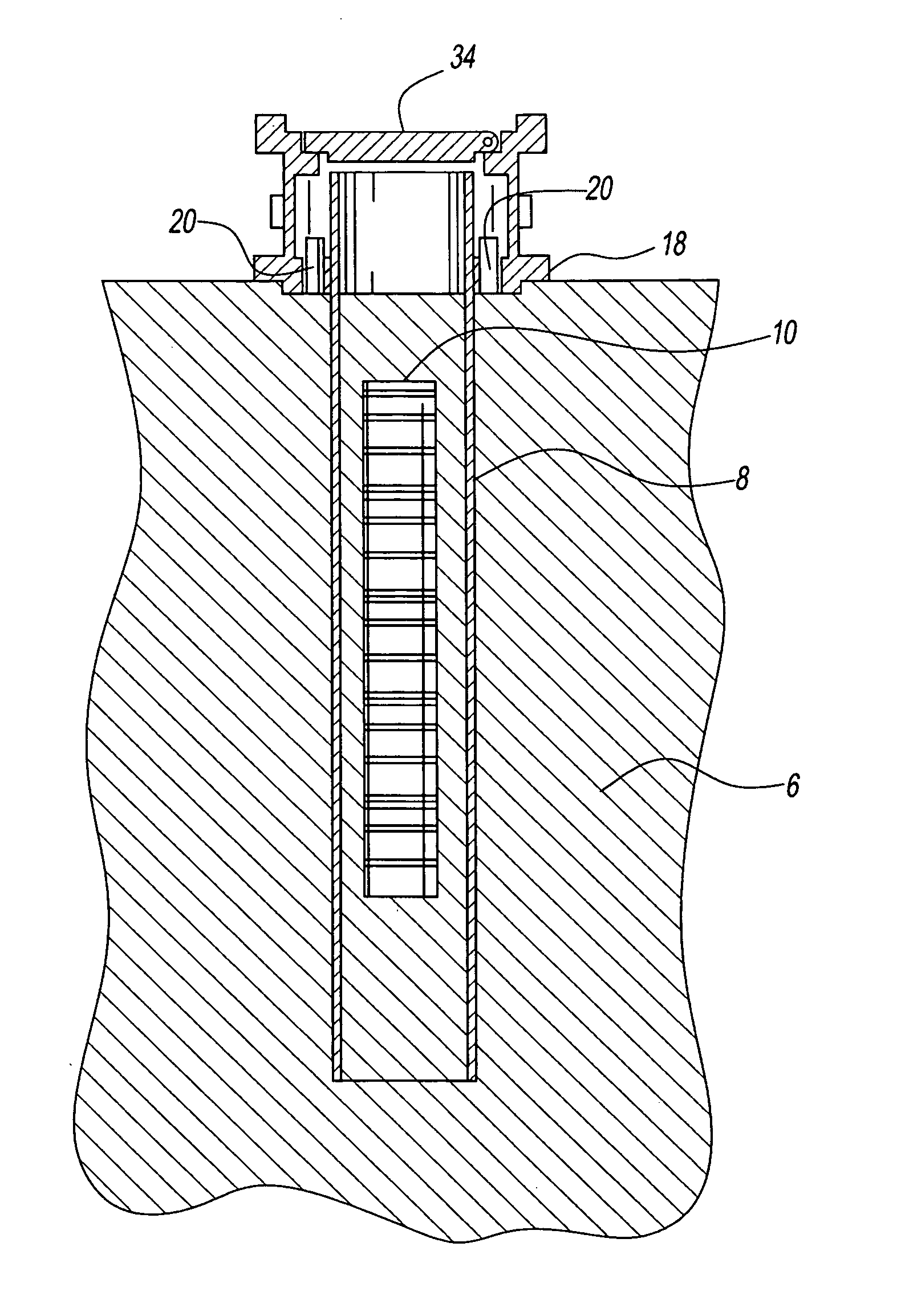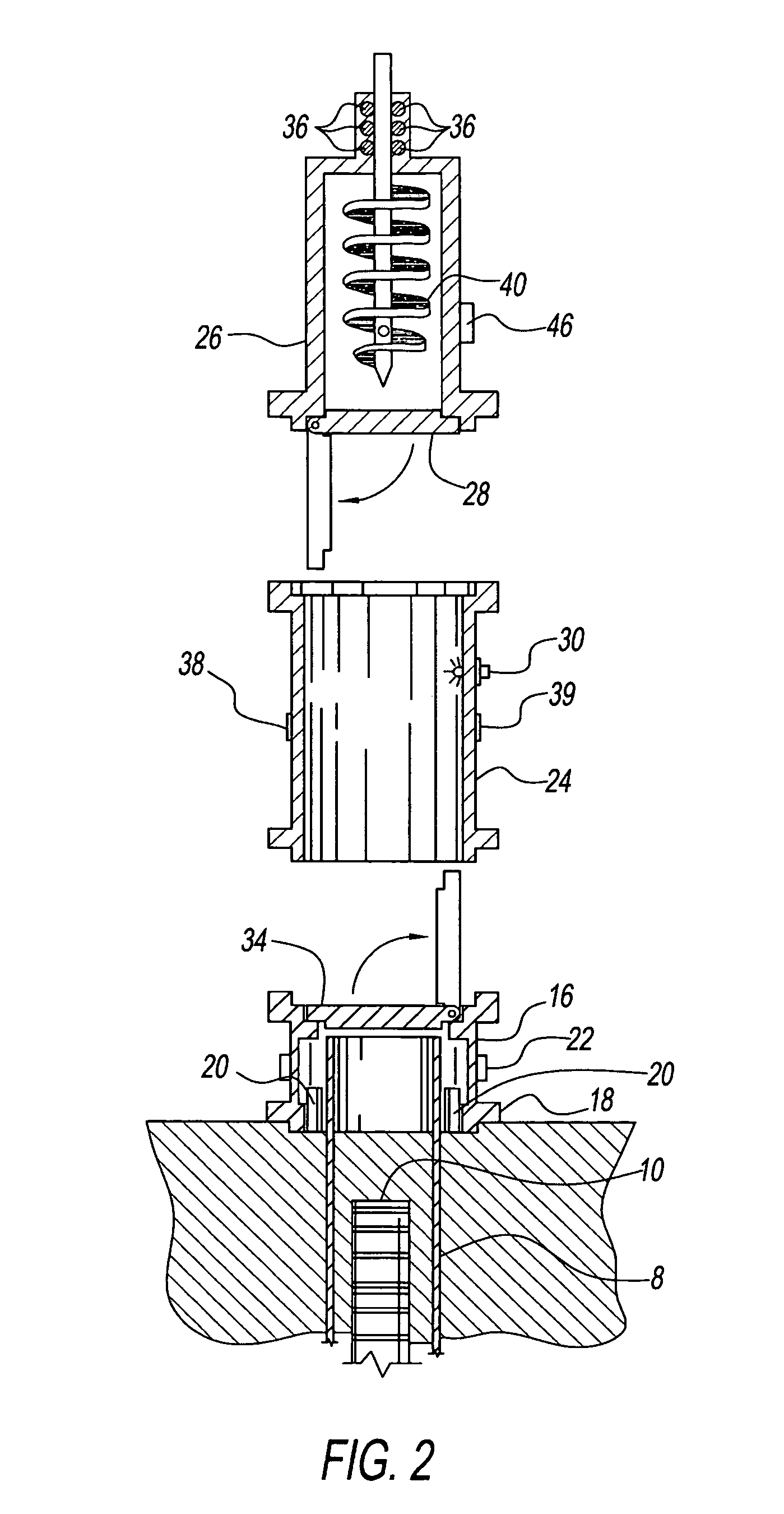Method and apparatus for identification, stabilization and safe removal of radioactive waste and non hazardous waste contained in buried objects
a radioactive waste and non-hazardous waste technology, applied in the field of methods and equipment for identification, stabilization and safe removal of radioactive waste and non-hazardous waste contained in buried objects, can solve the problems of free liquids mixing with soil and getting absorbed, and achieve the effects of preventing leakage, reducing contents, and less harmful effects
- Summary
- Abstract
- Description
- Claims
- Application Information
AI Technical Summary
Benefits of technology
Problems solved by technology
Method used
Image
Examples
Embodiment Construction
[0053]FIG. 1 shows the aspect where the casing (8) surrounds the buried VPU (10). The casing is made of ½′ thick carbon steel spirally welded metal pipe about 25 feet in length. The 25 feet length of the casing (8) results in approximately 3 feet remaining over ground level and 22 feet below the ground level to a depth of approximately 5 feet below the bottom of the VPU. The casing (8) is 4 feet in diameter. Alignment pins (20) on an enclosure base (EB) (18) are used to center the casing (8) around the VPU. It can be recognized that the EB (18) can be replaced by attachments on the steel casing that can be used for the purpose of centering and a separate enclosure base may not be necessary.
[0054]FIG. 2 shows the exploded view of the enclosure assembly consisting of three sub-assemblies. The EB (18) has a plurality of the alignment pins spaced on the base to help align the casing (8) concentrically over the buried VPU (10). The EB (18) is equipped with a safety shutdown door (34). An...
PUM
 Login to View More
Login to View More Abstract
Description
Claims
Application Information
 Login to View More
Login to View More - R&D
- Intellectual Property
- Life Sciences
- Materials
- Tech Scout
- Unparalleled Data Quality
- Higher Quality Content
- 60% Fewer Hallucinations
Browse by: Latest US Patents, China's latest patents, Technical Efficacy Thesaurus, Application Domain, Technology Topic, Popular Technical Reports.
© 2025 PatSnap. All rights reserved.Legal|Privacy policy|Modern Slavery Act Transparency Statement|Sitemap|About US| Contact US: help@patsnap.com



